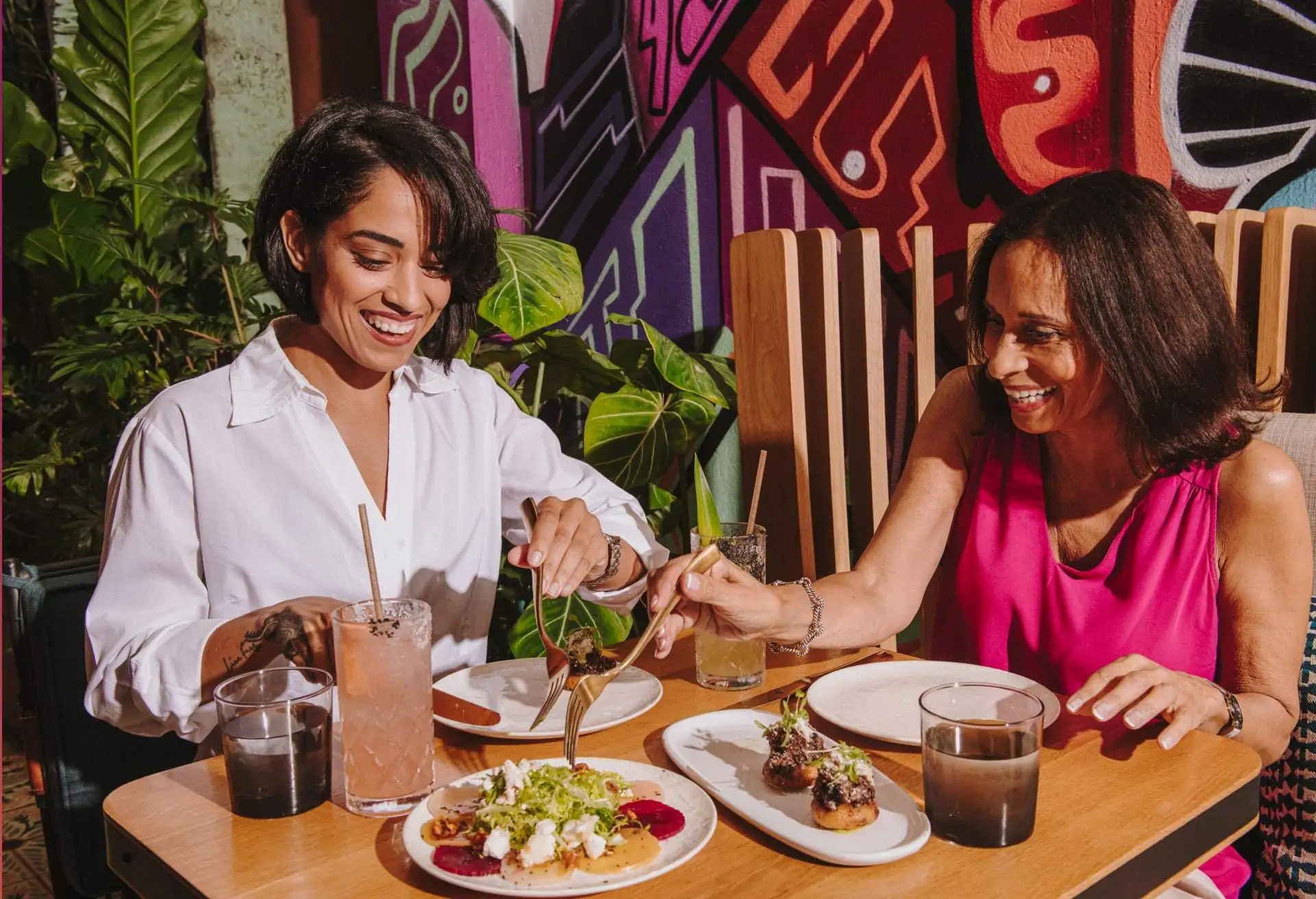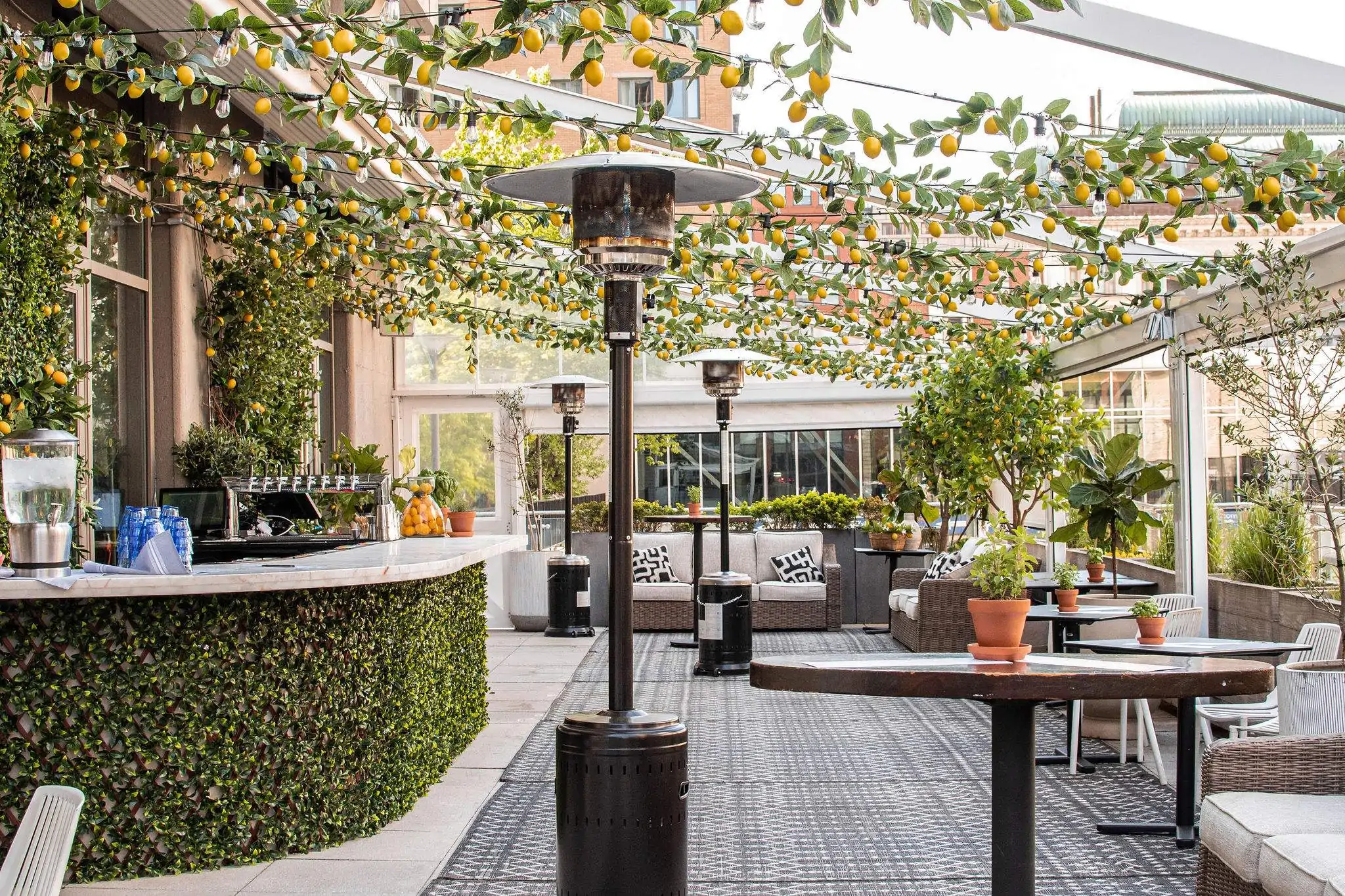Midday meal loyalists can’t get enough of brunch. Smithsonian Magazine references a 1895 Hunter’s Weekly article by British author Guy Beringer entitled, “Brunch: A Plea”—supposedly inspired by the author’s own hangover—in which he speaks of brunch putting diners “in good temper.” Luxuriating over bottomless mimosas, creamy egg dishes, and fresh pastries can do that to a person.
Brunchers are passionate diners. Some make elaborate plans weeks in advance and corral friends and family to build special occasions around it. Among the most dedicated are cash-strapped millennials, who will splurge on a brunch meal even when wallets are bare, according to Restaurant Marketing Labs.
But executing a brunch that appeals both to the masses and to persnickety diners can strip some chefs of their will to cook. Not every restaurant has a solid brunch following, so it can also be expensive to produce and difficult to market.
A peek at Google trends reveals how location impacts brunch revenue. The terms “Mother’s Day brunch near me” versus the ubiquitous “brunch buffet” return entirely different cities. Metro areas lead the pack with Washington, D.C., followed by New York, and Miami-Ft. Lauderdale. Crabcake Benedict-friendly Charleston and the beignet paradise of New Orleans wrap up the top five regions for diners on the hunt for brunch. Contrast that with brunch buffets, most popular in Las Vegas in the lead followed by Honolulu, San Diego and Los Angeles.
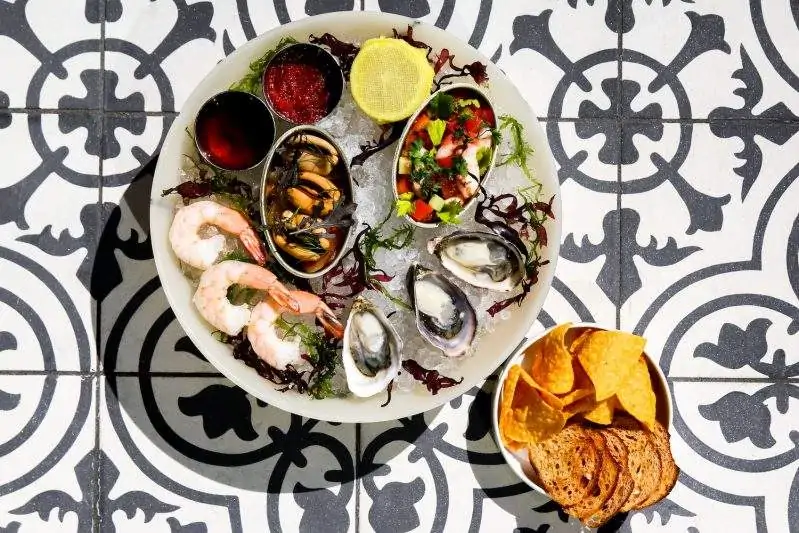
Brunch is a balancing act for chefs and restaurant management. To make it successful and keep it exciting requires dedication, creativity, and patience. Here’s how five North American restaurant leaders make that happen.
JP Potters, Executive General Manager and Wine Director of Boulevard Kitchen & Oyster Bar (Vancouver)
The seafood-focused Boulevard Kitchen & Oyster Bar, attached to a 500-room hotel in downtown Vancouver, is located in an ultra-high-end tourist area of the city. Building on the success of the restaurant and guests who frequent it, a couple of years ago, Boulevard management began strategizing how to make brunch more theatrical.
“It’s one thing to have good food and wine but lots of people have that,” said JP Potters. “We wanted to do something that would make the experience more exciting for diners and engage them.”
Boulevard’s mimosa trolley was just the ticket. “People really like the mimosa trolley going from table to table – what we learned is that a server can walk to a table and offer someone an alcoholic beverage at brunch and they’ll often decline, but when they see the cart, diners are more likely to accept,” says Potters, who serves French Champagne or very high-quality Prosecco.
“It says a lot about the psychology that people place a higher premium on the visual impact of having a high-quality product they can see with their eyes and not just on a flat menu.”
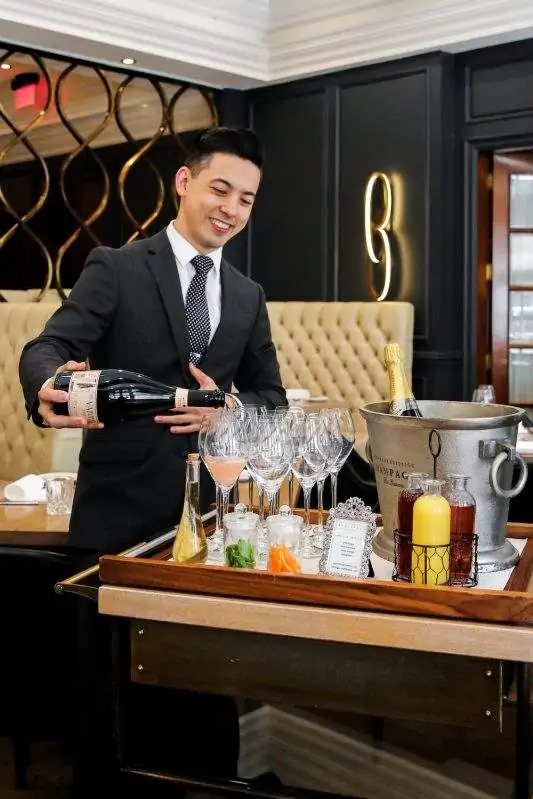
Potters also gives guests choices among the mimosas he offers. In addition to the traditional mimosa with fresh squeezed orange juice (never frozen from concentrate) Boulevard features a rose lavender mimosa and an elderflower mimosa with housemade elderflower syrup.
Boulevard dishes have a wow factor: lobster, sable fish crabcakes, and appetizers like the Boulevard “experience” with local oysters, Read Island mussels escabèche, poached prawns, octopus ceviche, and olive oil crisp with mignonette and cocktail sauce.
“Brunch service requires a lot of positive energy and everyone has to give a lot more, so naturally it is a bit of an odd time of day to be switched on to all smiles and go-go-go,” says Potters. “For most servers, it is the end of their week after five or six days when there are not as many smiles.”
For the benefit of his staff and his restaurant, Potters hires specifically for lunch and brunch. His dinner team doesn’t work lunches or brunches and he looks for a very specific type of server for that shift.

“If I’m interviewing late-night people and the most interesting thing to them is obscure wines, I know they will not enjoy working brunch. But there are people who only want to work Sunday and Monday daytime, because for them it is a side hustle and not the only thing they want to do,” says Potters. “Those servers see the brunch shift as fulfilling a need for them, rather than fulfilling the need for us. When you recognize that, it changes the psychology of it: find a person for whom brunch will be of benefit rather than insist on people doing this shift and everyone is happier.”
Potters’ tips for resurrecting a bland brunch:
- Empower staff and spread out the menu development process, if you have a competent team. Sharing this is important for people, so don’t hog the development process.
- Get ahead of your planning and give yourself the space to practice. Don’t try to develop a dish for today – that’s a losing formula. Instead, plan far enough ahead of it that you have the time to develop the dish.
- Be critical. Put your dishes in front of people you value. Don’t be so married to the first version of a new dish that you’ll become offended. Go through that sharing process and be okay with positive criticism.
“Our normal dish development process allows for all of our chefs, sous chefs, and senior line cooks to participate and develop dishes on their own,” says Potters. “We give them a brief of what we are looking for a specific month or season to set up goalposts.”
Dishes go through a rigorous process passing across the Boulevard management team, including executive chefs Roger Ma and Alex Chen and Potters. After, they share refining elements to make it stronger, like adding a textural component.
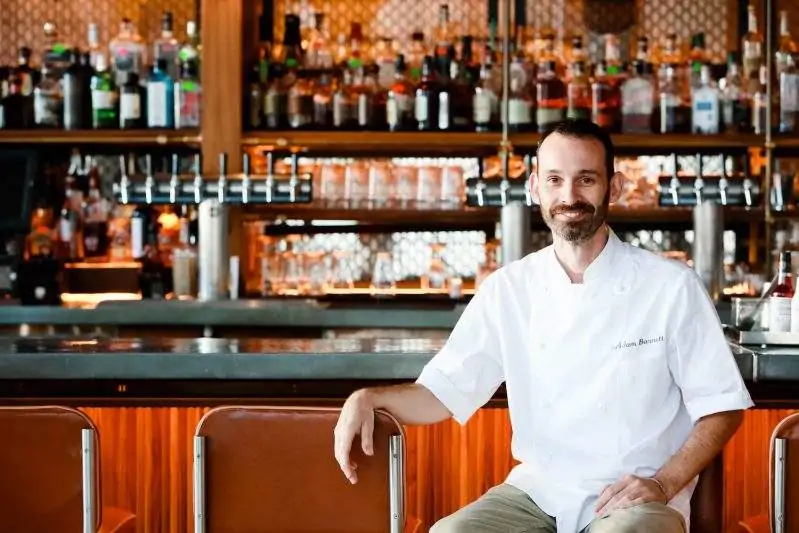
Adam Barnett, Executive Chef of The Katharine Brasserie (Winston-Salem, North Carolina)
At The Katharine Brasserie in the Kimpton Cardinal Hotel, chef Adam Barnett caters to a diverse blend of locals and business travelers. The influx of cutting-edge science and technology personnel at the nearby Wake Forest Innovation Quarter is slowly ushering in more brunch-savvy residents, a welcome addition to the growing city.
“I’m fortunate that they give me a lot of latitude in the Kimpton family, because there is a big difference between a hotel restaurant and an independent restaurant,” says the classically French-trained Barnett. “We have an obligation to share our very best with both locals and our travelers who often want very different things, especially at brunch.”
Barnett, who learned from chefs like Eric Ripert and worked at the West End Bistro at the Ritz-Carlton, the Poste Brasserie, and The Inn at Little Washington, had little time to waste in revising The Katharine Brasserie brunch menu soon after arriving in 2017.
He approached the process methodically. Regulars may have their Sunday staples, but he knew from working in the brunch capital of the country that chefs must also push the envelope enough to draw new guests through its doors.
“You have to look at brunch as a whole program unto itself and really take into account your location,” says Barnett. “In Washington, D.C., they are professional brunchers and despite being a hub for government, it’s a highly social town especially for brunch.”
Bringing a few big city brunch basics to Winston-Salem without knowing the city presented new challenges, including getting diners to try something new. Barnett also needed to achieve a balance of food volume and staffing.
“You can do a massive buffet, but if you aren’t careful, you could wind up with a lot of food waste, so it’s tricky on that front,” he says. “Nowadays we have so many people on different stations in some cases on different floors, so the labor model has changed. Looking at your numbers, you have to play a more conservative game than we did a few years ago.”
Barnett encourages new chefs to remember that the further you elevate your food, the more technique and staffing it requires. Finding enough staff available to work brunch can be a tall order.
“God bless immersion circulators – be sure to use technology to your advantage,” says Barnett, who believes in investing in the next generation of chefs, especially when it comes to brunch. He recently tasked his sous chef with coming up with the most creative dishes possible to consider for new menu options.
“Cooking is not an art, it’s a craft, and some chefs break the bounds of craftsmanship and become artists, so it’s rewarding to teach someone a skill and pass on the craft. I love seeing my guys have that ‘aha!’ moment,” says Barnett, who recalls doing tons of prep work, peeling hundreds of potatoes as he inched closer to his culinary idols to watch and learn.
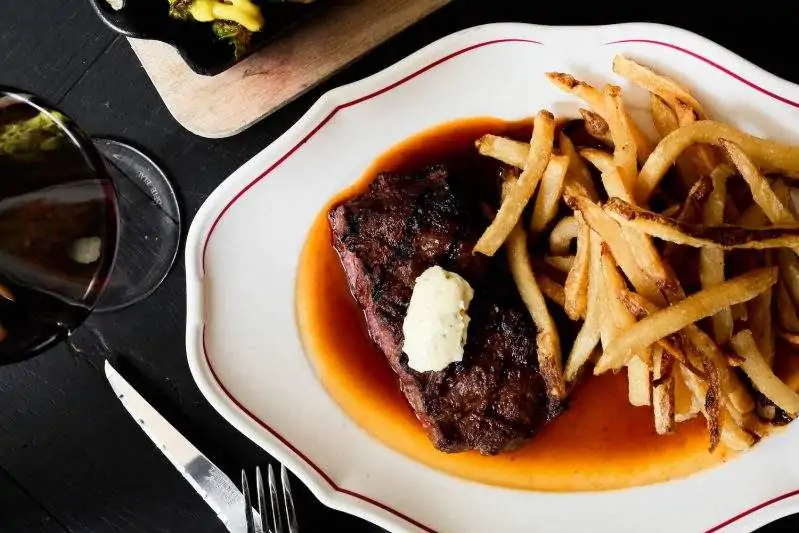
In a perfect world with unlimited staff and budget, Barnett envisions traditional fondue, more interactive items on his buffet and a significantly larger house-made pastry section, along with elegant presentations of house-cured salmon and hibachi grill. Barnett and the gourmands who flock to The Katharine Brasserie for his housemade paté also dream of more charcuterie, quickly making it a signature item – but it’s not feasible on a brunch menu.
“I spent a lot of years honing my skills in charcuterie, and it’s one of the reasons young cooks have come to work with me who want to learn that type of cuisine,” says Barnett. “I look forward to doing more wicked charcuterie displays and patés as we grow our brunch.”
Peter Smith, Executive Chef of JW Marriott Desert Springs Resort & Spa (Palm Desert, California)
With the power of the JW Marriott name and budget, mealtime means luxurious ingredients, top-tier service and photo-worthy dishes. All of that applies in Peter Smith’s standout brunch in the arid destination of Palm Desert, California.
The Australia native has cooked all over the world, including Southeast Asia. From his previous post as Director of Culinary for Global Operations at Marriott headquarters in Maryland, Smith now oversees 11 food service areas and more than 160 employees and is at the helm of the resort’s T&T Innovation Kitchen, an experimental culinary outlet revolving around time and temperature.
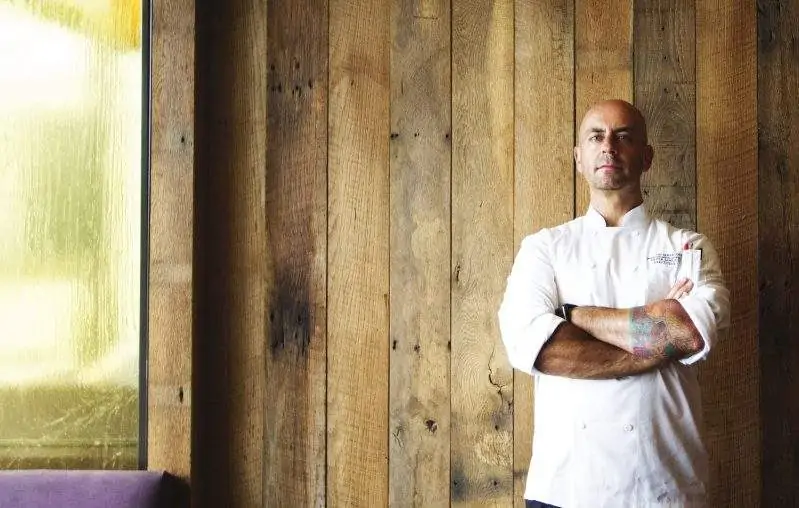
“Being located within the Coachella Valley, we are the biggest resort in the area, and the value for the money for brunch is becoming considerably harder to justify,” says Smith. “So we put on a show for our guests with whole pigs in the caja china, Argentinian grills with metal spikes, prime ribs, and whole salmon.”
Smith says no matter whether a chef is located in a small town, resort or big city, brunch has to have a wow factor that appeals to diners in person and on social media. Lamb racks to New York steaks, pork chops to crèpe and Benedict stations, brunchers want a cornucopia.
“Brunch is that transitional meal that runs the whole gamut of food, so you’ve got to charge accordingly and innovate with fresh ideas week after week,” says Smith. “The challenges of brunch are multi-faceted, and in a place like ours, diners expect to have their minds blown.”
So many balls in the air requires lots of labor, which can be trying, even a few hours from Los Angeles and Las Vegas. Their staffing resources include two internship programs, one Smith reestablished and one he created, developed with two high schools in the area to help staff his brunches. The programs help students build credits they need for their college culinary requirements.
“I like to hire interns for brunch and as buffet station attendants, because oftentimes they can only work certain days due to school, and the guests enjoy speaking to these bright-faced kids who are just happy to be there,” says Smith.
The Sunday brunch buffet for which Smith is known takes place at the Rockwood Grill in an indoor/outdoor experience, with grills and firepits. Also, Smith just added a mobile Neapolitan wood fired oven for fresh flatbreads. He uses cooking methods like sous vide to further engage diners. “Sous vide is a great way of holding texture, diners are curious about it and you can have a sous vide station to finish portions in the pan with butter and garlic.”
Smith has another secret to a successful brunch: understanding the flow of reservations.
“In a perfect world everyone would make their reservations through OpenTable so you could assess when you have a fifteen-top and when you might have a break in service,” says Smith. “When you look at the flow of the guests coming through, you can put out larger portions for busier times and scale back to smaller portions when there are fewer people scheduled.”
Smith says the key is varying the size of presentation vessels depending on traffic, so everything stays fresh on a buffet. He has a few rules of thumb he follows to make that happen:
- Don’t pre-cook eggs. Eggs should never sit under a chafing dish or under a light.
- Steer clear of fresh garnishes – they look pretty when they come out of the kitchen but look terrible when wilted.
- Get some color on your buffet in the form of roasted tomatoes, grilled peaches, or grilled plums. Consider hearty salsas like charred pineapple, fried potato chips, and root veggies to provide texture and color.
- Cook whole meats rather than cutting things in two-ounce portions, wrapping them and recooking them.
- Large whole fish is always a showstopper – just be sure your staff is managed to attend it because it can look mangled after diners come through.
- Accent your tables – think giant banana leaves.
- Don’t put starchy items on a buffet, like risotto, which is beautiful when it goes out but will become hardened. Instead, consider a pilaf or Asian-style fried rice. Because mashed potatoes are sloppy, opt for fingerling potatoes.
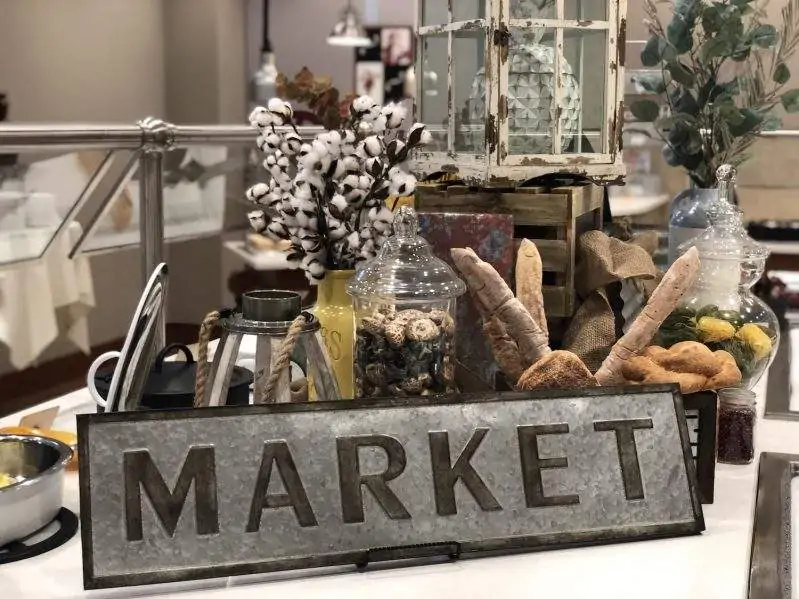
Scott Watson, Executive Chef of Preston’s Restaurant at The Inn at Virginia Tech (Blacksburg, Virginia)
At Preston’s Restaurant, a many diners are walk-ins and a surprising few are guests in the corresponding hotel. Brunch begins after check-out but too early for check-ins, so the after-church crowd beats a hasty path to its doors. Some Sunday brunches at Preston’s Restaurant include music, and diners here seek out fellowship in a family-oriented space. Chef Scott Watson recently revamped his Sunday brunch room to make it more visually palatable. “Elegant presentations are hard to do for Sunday brunch because once the first person comes through, the presentation is destroyed in the chafing dish.”
“You eat with your eyes first, so you want big displays and beautiful lighting to highlight the food,” says Watson. “People come to brunch to see what the chefs can do and for service, so we enjoy it and are constantly learning so we can do better.”
Watson has fond memories of cutting his culinary teeth on brunch – he and his fellow chefs called it “Sunday fun-day,” challenging each other to come up with different styles of Eggs Benedict. The practice resulted in a philosophy he continues to this day in training his staff.
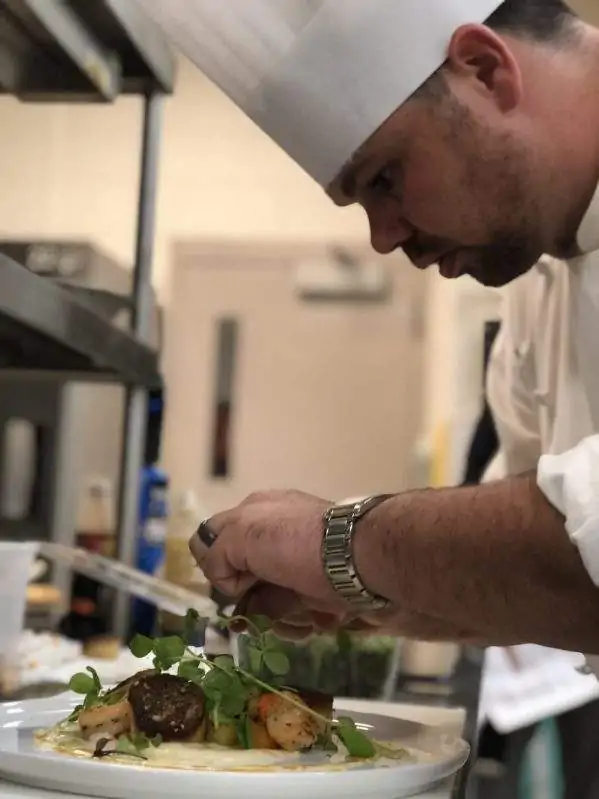
“When you find good Sunday brunch staff, you train them and you keep them on Sunday brunch, especially when staff members are naturals at remembering important details like timing and presentation,” says Watson, who has an authentic style his regulars appreciate that shows in his cooking.
Watson isn’t offended that one diner might want fried chicken or grilled cheese versus another who would prefer grilled sea bass or truffles. “As chefs, we have to dance that dance, but for brunch you can do it in a unique way to show your ability–that’s what I tell younger culinarians coming out of the gate putting truffle oil on everything because they don’t know better,” says Watson. “They may say they won’t serve grilled cheese, but you can do something like a duck-fat grilled cheese with cheddar and tomato conserve to put a unique spin on it and still pay homage to the classics.”
Watson’s recalls his first day working at a high-end resort and learning the hard lesson of restraint – not to add an extra ingredient unless it enhances the dish. Such is the case with Watson’s bread pudding, which has attracted a frenetic following among locals. Others have needed adjustment along the way.
“I tried a few different Eggs Benedicts when I got here, and I found out really fast they want classic Eggs Benedict, not homemade English muffin with grilled tomato and spinach cream sauce – they like the basics and they love prime rib,” says Watson.
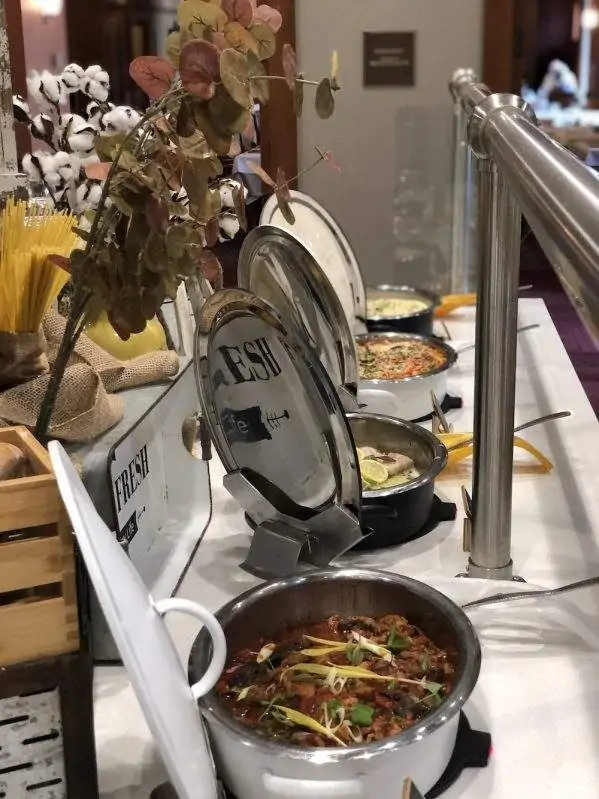
After seeing what a restaurant can do with a typical Sunday brunch, diners will return for Easter, Mother’s Day, and Christmas. The best part about buffets is that chefs don’t have to wait to learn whether diners like a new menu. Creative options can make or break a buffet item.
“Embrace brunch and challenge your culinary staff to come up with the most unique ideas to make it fun for them,” says Watson, who applies a unique spin to traditional dishes. At one of the carving stations, he serves a bourbon- and gingersnap-crusted prime rib, which his guests have come to expect in the wintertime, and a different variation on shrimp and grits to stand out from other brunch restaurants who serve the same dish.
Roy Benningfield, Executive Chef of Salt (Boulder, Colorado)
As the culinary director who oversees the kitchen at both Salt and Pepper in Boulder, Roy Benningfield offers a stunning brunch at Salt on Saturdays and Sundays. (The sister restaurant Pepper does lunch and brunch specials, so as not to take away from the brunch crowd that Salt has already established.) Salt has earned a reputation for serving organic, non-GMO food, locally sourced whenever possible. Benningfield says it’s less about being over the top and more about really good ingredients cooked well.
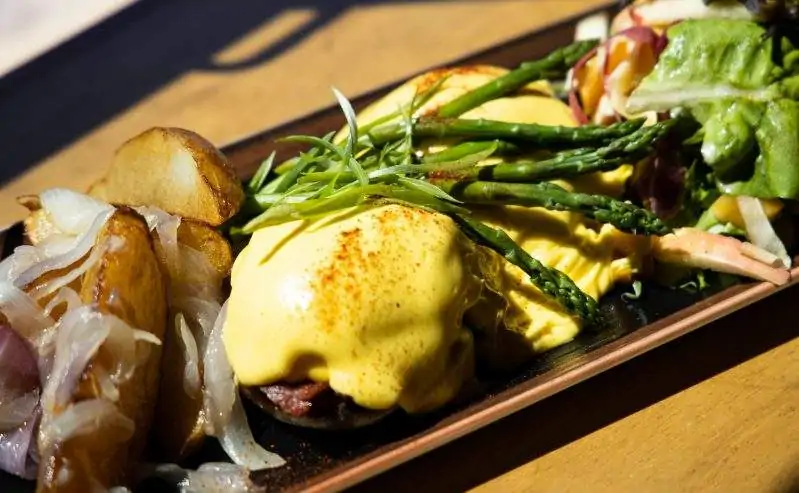
“We have a few brunch dishes that probably won’t go anywhere, but our brunch menu changes at least every week depending on what is in season at the farms,” says Benningfield. “We might get purple potatoes from Monroe Farms and kale from Kilt Farms, which features nutrient-rich soil – when you get this quality produce, you don’t have to do much to it.”
A simple sliced tomato at Salt is a special occasion, with different types and flavors of salts for diners to sample. Benningfield echoes what so many chefs know: that a tomato from a local farm tastes entirely different than a mass-produced vegetable. Many of the foods at Salt include plant-based dishes, but he says they still ring the brunch bell.
“A lot of it is keeping up with the times, and we are looking at competitors to see what’s successful elsewhere,” Benningfield says. That includes keeping a close eye on labor trends. “Colorado is such an up-and-coming state, with so many restaurants hiring, that if a cook or server doesn’t like a job or feels like they are being mistreated, they’ll go get a job on the same block on that same day.”
Benningfield has assembled a great team at both Salt and Pepper, investing time and effort into staff training and menu planning. He uses a little of the past to influence the present, much to the delight of diners.
“A lot of it for us is old-school dishes and recipes or techniques that have been overlooked, and we revisit them–they might include old French or Italian recipes with the new produce we can access. What results is a melting pot of old and new on the brunch menu,” says Benningfield, who won the Colorado Restaurant Association award for chef of the year 2019.

Another tip Benningfield says has helped streamline his brunch: keep it pithy.
“In the past few months we have undergone an overhaul on menus and descriptions because they got too wordy, so we have adopted a flash card mentality,” he says. “Research other menus trends of the year and rework your recipes and the procedure, and discuss with your team how that dish makes it pertinent to the establishment.”
What doesn’t work on a buffet might work in another way. “A bagel with lox and cream cheese might not make sense on a buffet, for example, but maybe a bagel pie you can cut into wedges, does,” says Benningfield.


